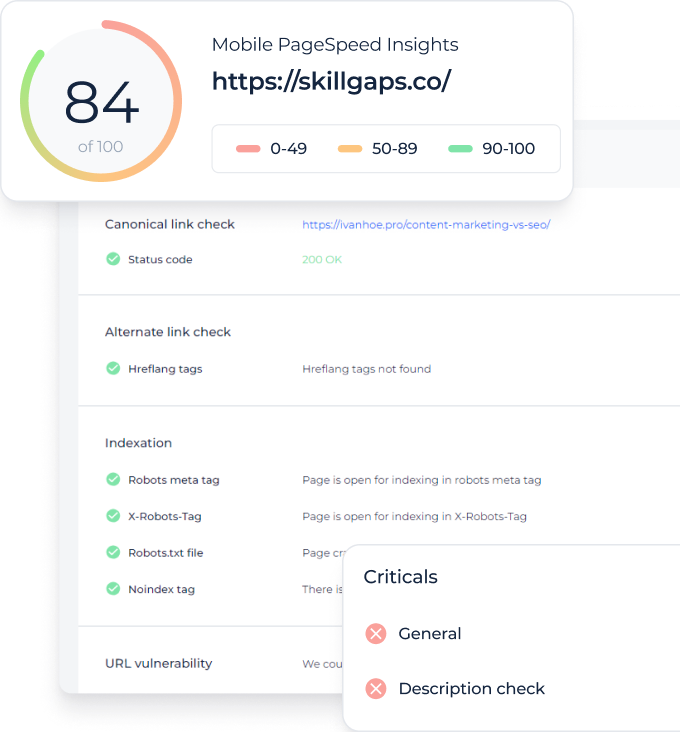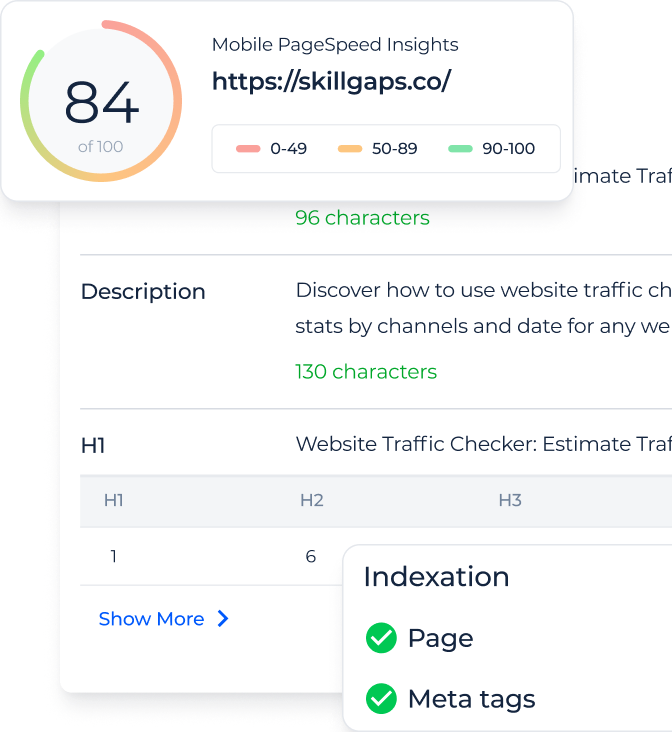What is a Domain Authority Checker?
Sitechecker offers an easy way to evaluate domain authority (DA), a search engine ranking score developed by Moz that predicts how well a website will rank on search engine result pages (SERPs). This user-friendly tool accurately presents the DA of any website, whether it’s yours or a competitor’s.
Key Features of the DA Checker
- Gather comprehensive data for any domain you wish to assess for Domain Authority, and access other critical metrics like Page Authority (PA) for the domain’s main page and the MOZ Rank.
- As backlinks directly impact the DA, we’ve integrated a backlink tracker tool into our platform. It allows you to inspect your domain’s backlinks and track them effortlessly.
- Sitechecker comprehensive SEO platform goes beyond mere DA analysis. It offers a detailed SEO audit (covering both on-page and off-page elements), rank tracking, and site monitoring, among other exceptional features.
Why is it Important to Check Website Trust Score?
Here are some reasons why it’s essential to check the Domain Authority of a website:
- SEO Strategy: Use Domain Authority as a comparative tool when optimizing your website for search engines. Checking the DA of competing websites lets you estimate the SEO effort required to outrank them.
- Link Building: If you’re implementing a link-building strategy, the DA of the sites you’re getting links from matters. Links from high-DA websites are typically more beneficial to your site’s DA and overall SEO than links from lower-DA resources.
- Website Evaluation: DA serves as a quick metric to evaluate a website’s overall quality and reputation. If you’re considering purchasing a website or a domain, checking the DA gives you an idea of its value and potential.
- Content Marketing: If you’re looking to guest post or contribute content to another site, checking the DA can help you prioritize higher authority sites, providing more SEO benefits when they link back to your site.
- Performance Tracking: By regularly checking your website’s DA, you track the effectiveness of your SEO efforts over time. If your DA is increasing, it’s a good sign that your SEO strategies are working.
How to Use the Website Trust Score Checker
Our tool will allow you to quickly determine the site rating for your website, partners, or competitors. So, let’s take a look at the check steps.
Step 1: Enter the domain to analyze and click the ‘Check DA’ button
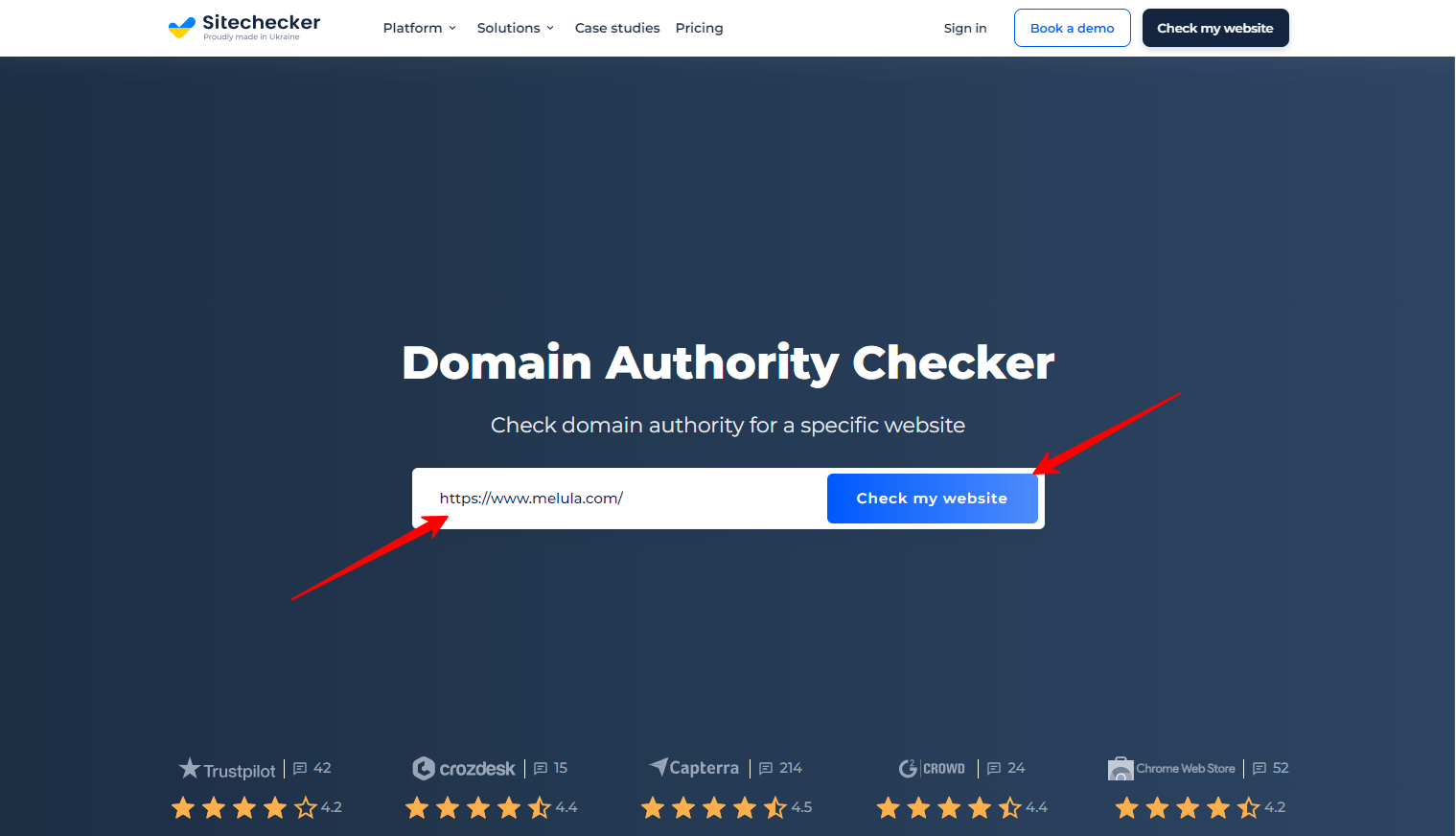
Step 2: Analyze domain authority checker results
You’ll receive the domain authority (DA) score, page authority (PA), and Moz rank data upon scan completion. The score ranges from one to 100. Higher scores mean a greater ability to rank.

This information provides insight into the domain’s trustworthiness and potential to rank. Depending on your objective and this data, you can decide whether to create a backlink from the domain or consider it a potential partner (if it’s another website). If it’s your website, evaluate your ranking potential and adjust your SEO strategy. It could include link-building or on-site optimization tactics such as internal linking.
Features of the website authority checker
Our tool goes beyond analyzing your DA data. It also crawls the website you’re examining. If you’re checking your website, use this feature to detect technical issues that might harm your ranking. To do this, simply click the “Check Report” button in the banner on the results page. You’ll get a comprehensive site audit report that identifies various problems on your website and guidance on how to resolve them.
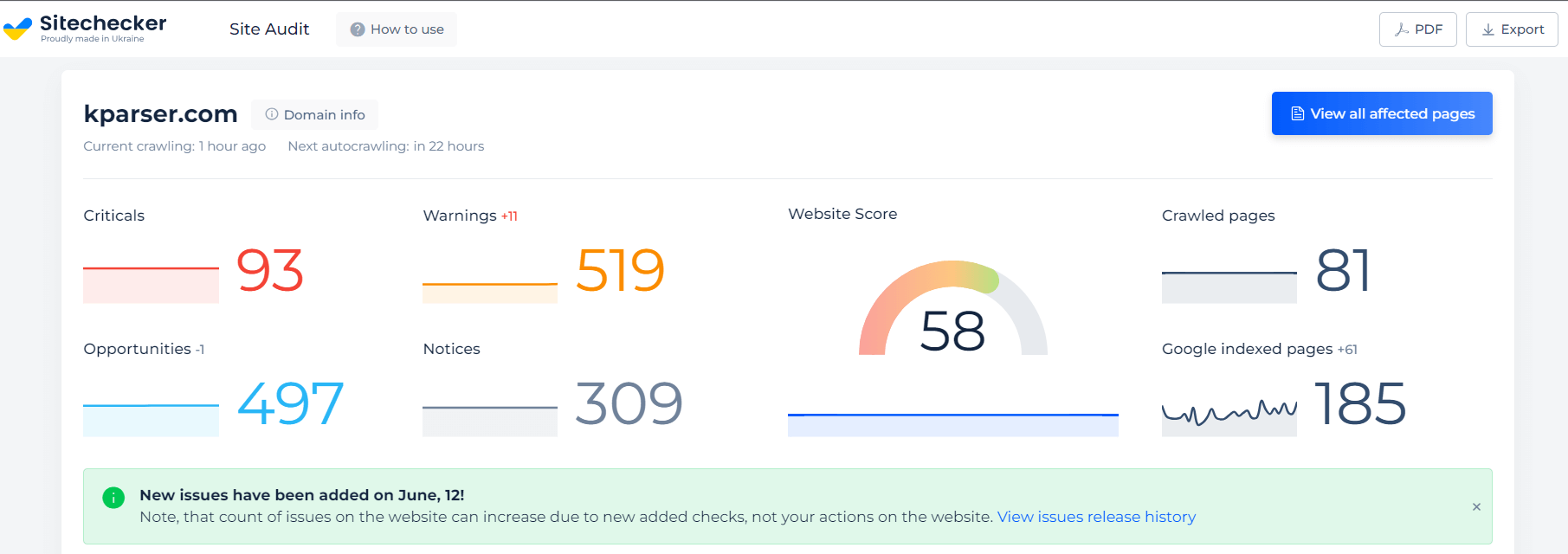
You can also filter issues by type (Critical, Warnings, Opportunities, Notices, Zero issues) or category (Links, Indexability, Content Relevance, etc.), enabling you to swiftly address the issues most crucial to your website’s success.
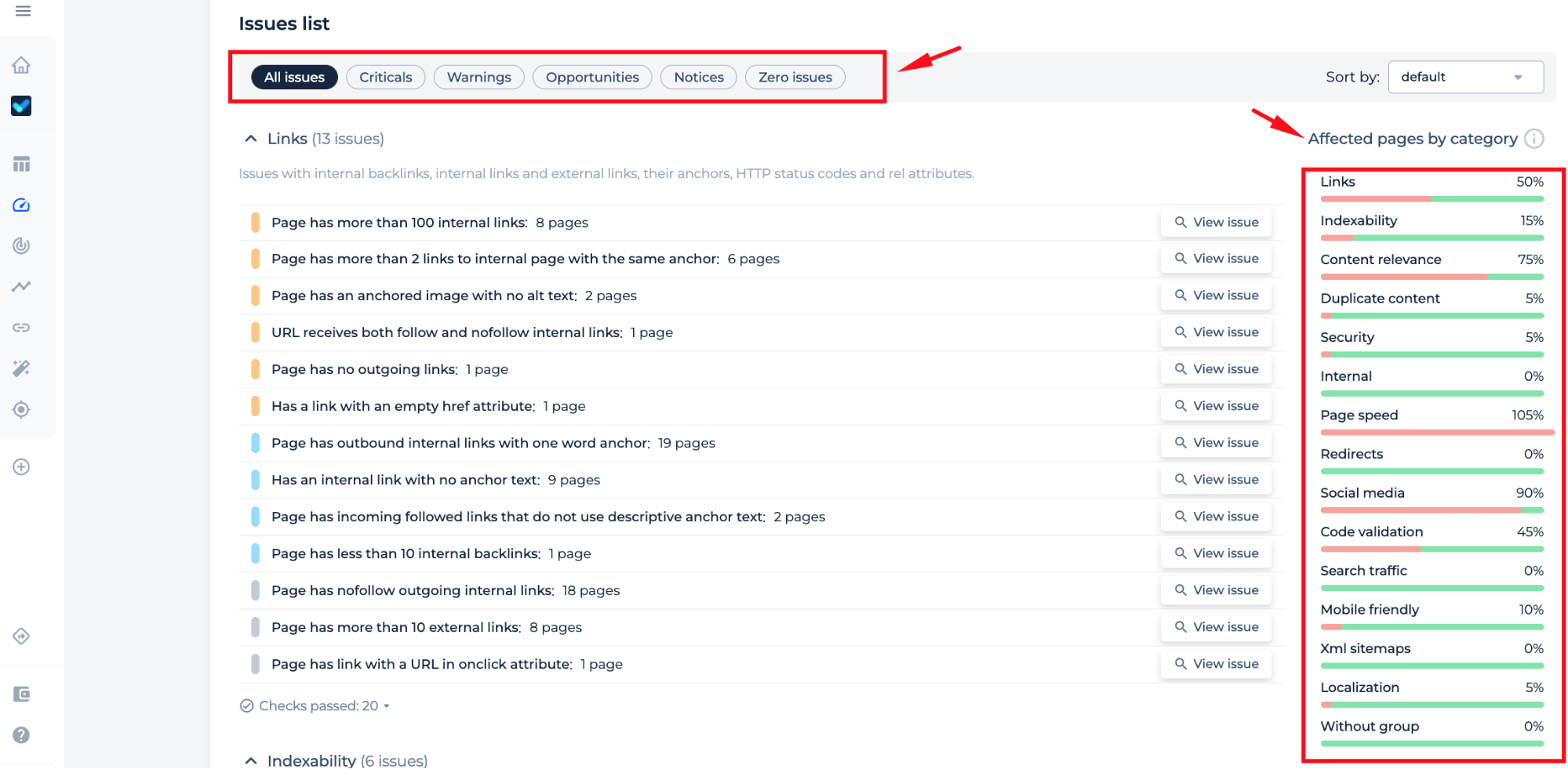
Furthermore, you’ll have the opportunity to explore other Sitechecker platform features like the Rank Checker. This tool helps you understand your DA and identifies the queries your website is currently ranking for, enabling you to conveniently monitor keywords with our rank tracker.
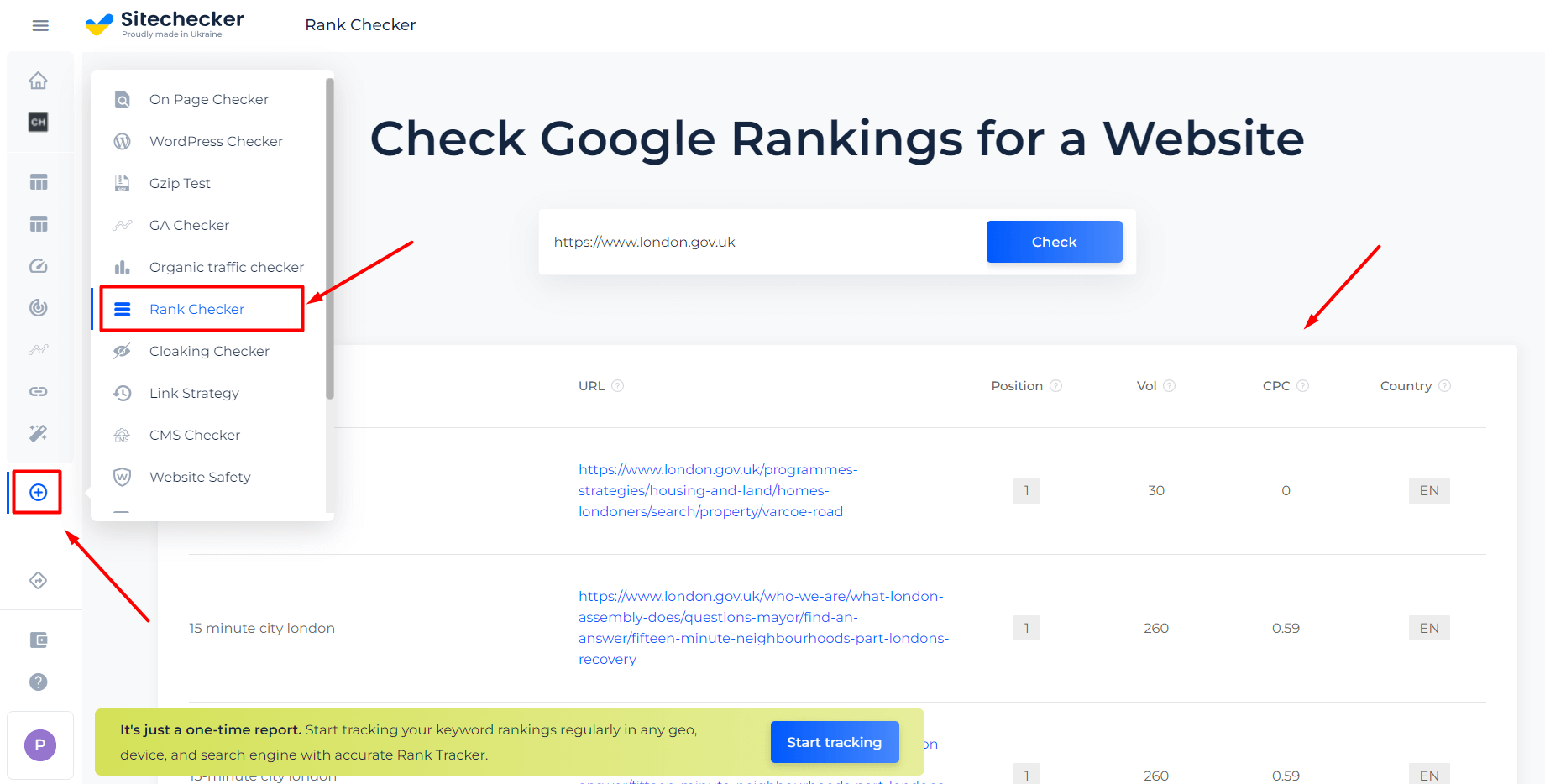
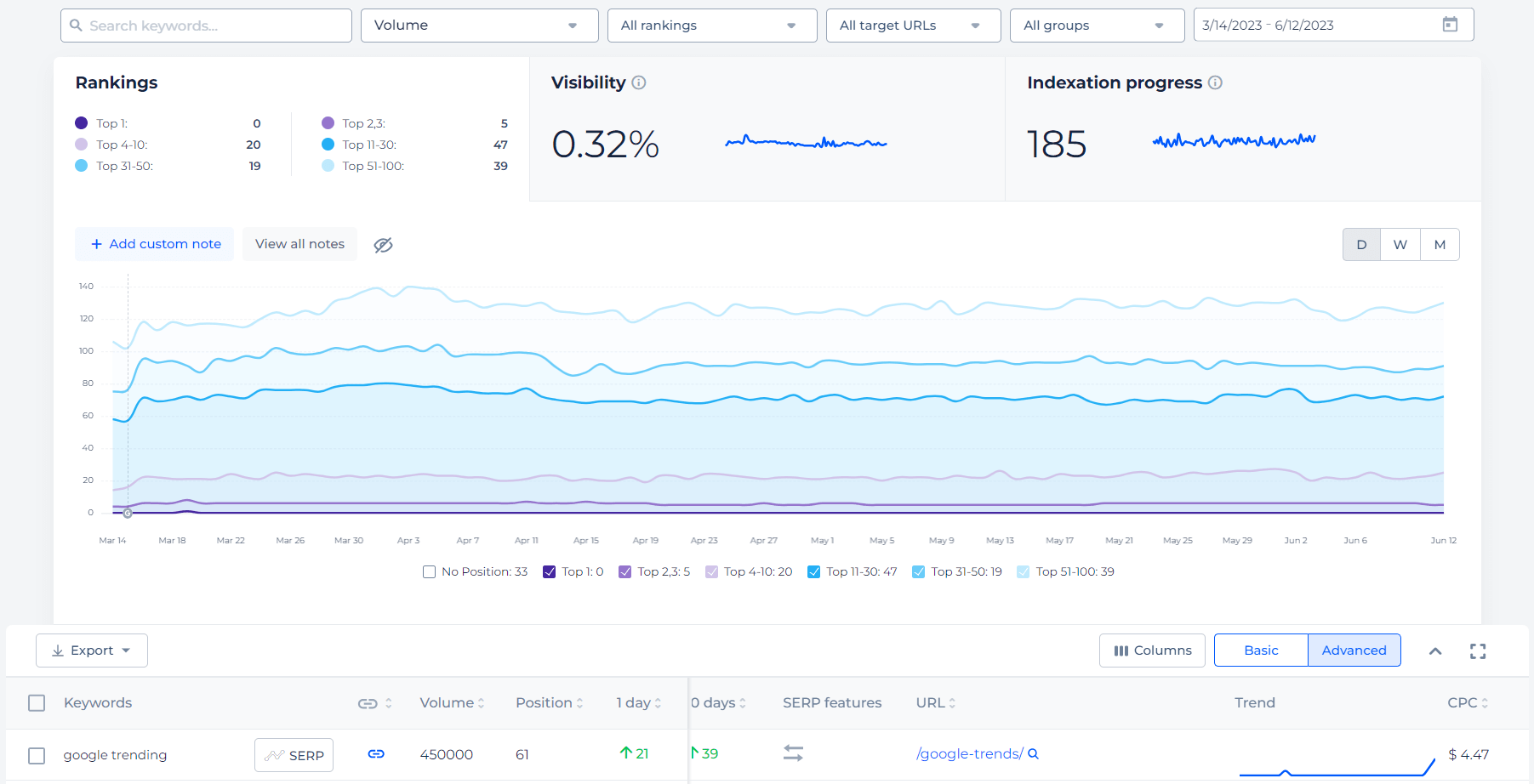
Concluding Remarks
In conclusion, Sitechecker’s Domain Authority Checker is invaluable for SEO specialists, marketing agencies, and website owners. It offers a quick and straightforward method for evaluating a website’s domain authority and other Moz-based parameters like Page Authority and Rank. This tool lets you compare your website’s standing with competitors, facilitating informed decisions about your SEO strategy. Beyond checking domain authority, the DA Checker also offers additional features such as an SEO audit, rank checker, and tracker, among others.
What is a good domain authority score?
Why did my DA change?
- Root link domains (the number of unique backlinks to your site).
- The total number of incoming links to your site.
- The level of spam of sites linking to your site.









